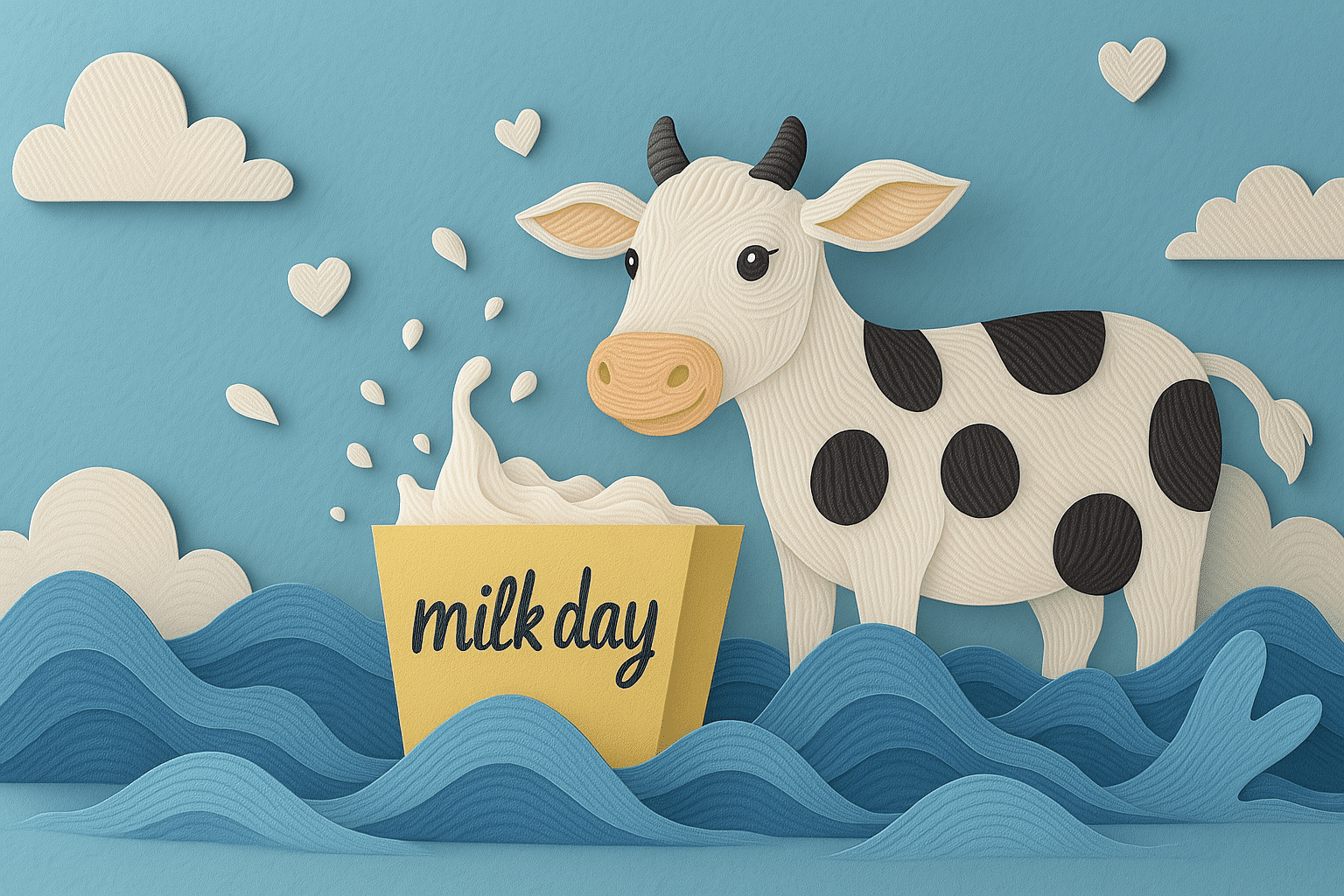What is World Milk Day?
World Milk Day, celebrated annually on June 1st, is a global event established by the Food and Agriculture Organization (FAO) of the United Nations to recognize the importance of milk as a global food. The day is dedicated to raising awareness about the nutritional benefits of milk and dairy products, as well as the role of the dairy sector in supporting livelihoods, communities, and economies around the world. It also highlights the sustainable practices and innovations within the dairy industry.
History and Origin
World Milk Day was established by the FAO in 2001 to provide an opportunity to focus attention on milk and its contributions to human health and nutrition. June 1st was chosen because many countries were already celebrating milk-related events around this time. Since its inception, World Milk Day has grown into a significant global event, with activities and celebrations taking place in over 80 countries.
Who Celebrates World Milk Day?
- Dairy Farmers and Producers: Highlight their role in producing high-quality milk and dairy products.
- Health and Nutrition Experts: Promote the health benefits of milk and encourage its consumption.
- Schools and Educational Institutions: Organize events and activities to teach children about the importance of milk in a balanced diet.
- Community Organizations: Host celebrations and informational events to raise awareness about dairy.
- General Public: Participate in events, enjoy dairy products, and learn more about the dairy industry.
Slogans and Themes
The themes for World Milk Day often revolve around nutrition, sustainability, and the dairy community. Slogans such as “Drink Milk Today,” “Dairy for Health,” and “Sustainable Dairy” emphasize the health benefits of milk and the importance of sustainable dairy farming practices. These themes encourage people to appreciate the value of milk and dairy products in their daily lives.
Colors, Symbols, and Patterns
Colors:
- White: Symbolizing milk and its purity.
- Blue: Representing health, trust, and the global nature of the celebration.
- Green: Reflecting sustainability and the environment.
Symbols:
- Milk Bottle or Glass: Representing the product being celebrated.
- Cow: Symbolizing the primary source of milk.
- Dairy Products: Including cheese, yogurt, and butter, highlighting the variety of dairy.
Patterns:
- Milk Splash: Illustrating the freshness and vitality of milk.
- Farm Scenes: Depicting cows, pastures, and dairy farming.
- Nutritional Icons: Representing the health benefits of milk.
Most Used Tags
- #WorldMilkDay
- #DrinkMilk
- #Dairy
- #Milk
- #Nutrition
How to Celebrate
- Drink Milk: Enjoy a glass of milk or include dairy products in your meals.
- Visit a Dairy Farm: Learn about the process of milk production and meet the farmers.
- Host an Event: Organize a community or school event to promote the benefits of milk.
- Share Recipes: Exchange recipes that feature milk and dairy products.
- Educate Others: Use social media to share facts about milk’s nutritional benefits and the importance of the dairy industry.
- Support Local Dairy Farmers: Buy milk and dairy products from local producers.
- Participate in Online Campaigns: Join global celebrations and campaigns online using popular hashtags.
Importance of World Milk Day
World Milk Day is important for raising awareness about the nutritional benefits of milk and the role of dairy in a healthy diet. It highlights the contributions of the dairy sector to the economy and society, promoting sustainable practices in dairy farming. By celebrating this day, people around the world can learn more about the value of milk, support their local dairy industry, and encourage healthy dietary choices.
Features
- Environment Sustainability and Climate
- Food and Drinks
